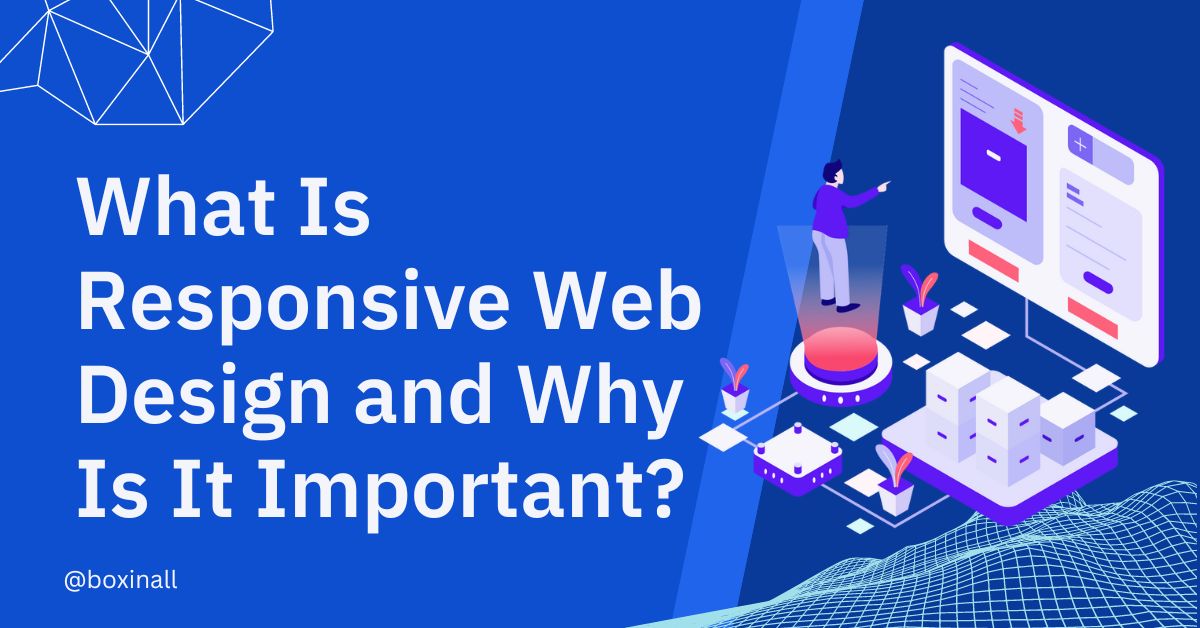In today’s digital world, users interact with websites across a variety of devices, including smartphones, tablets, laptops, and desktops. Each device has different screen sizes, resolutions, and functionalities, making it essential for websites to adapt seamlessly across all platforms. This is where responsive web design comes into play.
What Is Responsive Web Design?
Responsive web design (RWD) is a web development approach that creates dynamic changes to the appearance of a website, depending on the screen size and orientation of the device being used. Instead of designing multiple versions of a website for different devices, responsive design enables a single website to adjust its layout, images, and content to look great on any screen.
Key principles of responsive design include:
- Fluid Grid Layouts: Content is placed in a flexible grid structure that can scale based on screen size.
- Flexible Images: Images resize or reflow within their containers, ensuring they look good on any device.
- Media Queries: This allows the website to apply different styles for different device characteristics (e.g., screen width, pixel density).
Why Is Responsive Web Design Important?
- Improved User Experience
A website that adapts to the user’s device provides a more pleasant and engaging experience. Users don’t need to zoom in, scroll horizontally, or navigate through awkward layouts. A positive user experience means users are more likely to stay on your website, explore more content, and ultimately convert into customers. - Mobile Traffic Domination
Mobile devices now account for a large percentage of web traffic. With the increasing use of smartphones for browsing, shopping, and reading content, having a mobile-friendly website is essential. A responsive website ensures your content is easily accessible to mobile users without creating a separate mobile version of the site. - Cost Efficiency
Instead of maintaining separate websites for desktop and mobile, responsive design simplifies the process by creating a single adaptable site. This reduces the cost of development and maintenance. You only need to update one site, making it a more efficient solution over time. - Better SEO Rankings
Google recommends responsive web design and considers it a ranking factor in its algorithm. Websites that are mobile-friendly rank higher in search engine results. A responsive site with fast loading speeds and optimal usability can improve your SEO performance, leading to increased visibility and more organic traffic. - Easier Maintenance
Managing a single website that works across all devices is far simpler than maintaining multiple versions. Any updates or changes only need to be applied once, saving you time and resources. This also ensures consistency in your content, branding, and user experience. - Increased Conversion Rates
A website that works well on every device can lead to increased engagement and conversion rates. If users find it easy to navigate and interact with your site on their smartphones or tablets, they are more likely to make purchases, sign up for services, or engage with your content. - Future-Proof Design
Responsive web design isn’t just about current devices; it’s also about preparing for the future. As new devices with varying screen sizes and resolutions enter the market, responsive websites are ready to adapt without the need for significant overhauls.
Conclusion
Responsive web design is no longer optional in today’s digital age—it’s a necessity. It ensures your website is accessible, usable, and optimized for all devices, providing a seamless experience for your audience. By embracing responsive design, you can improve user engagement, increase conversions, and maintain a competitive edge in a rapidly evolving digital landscape.



